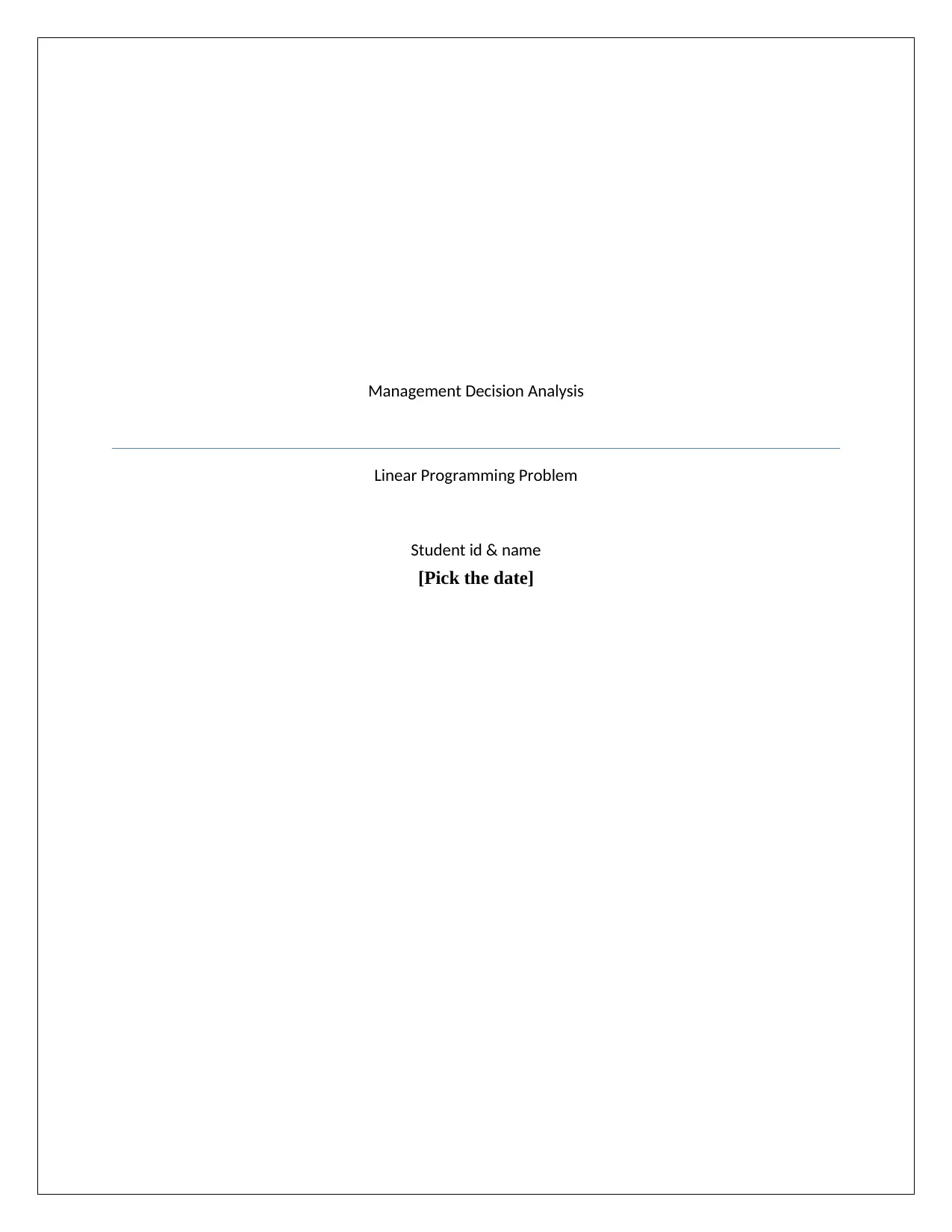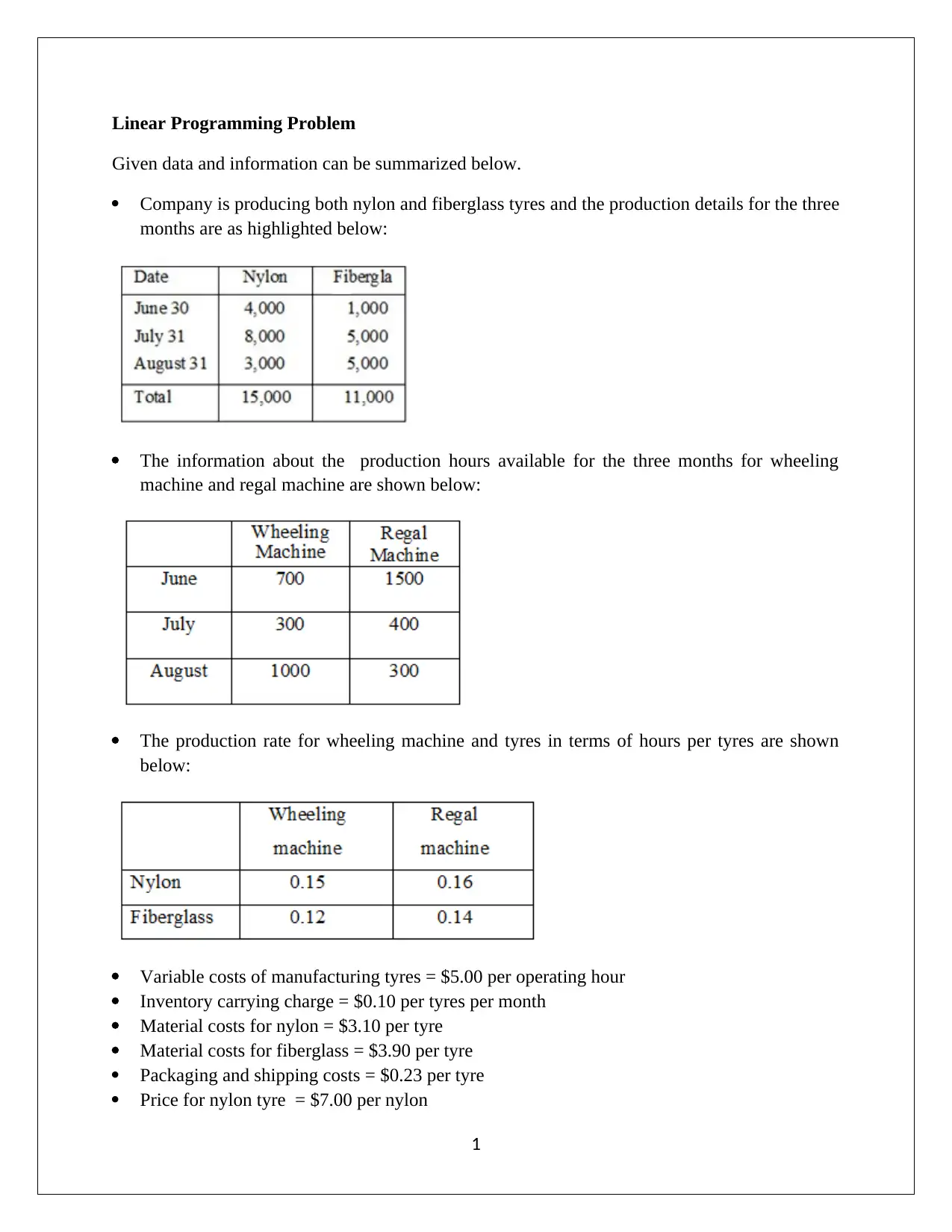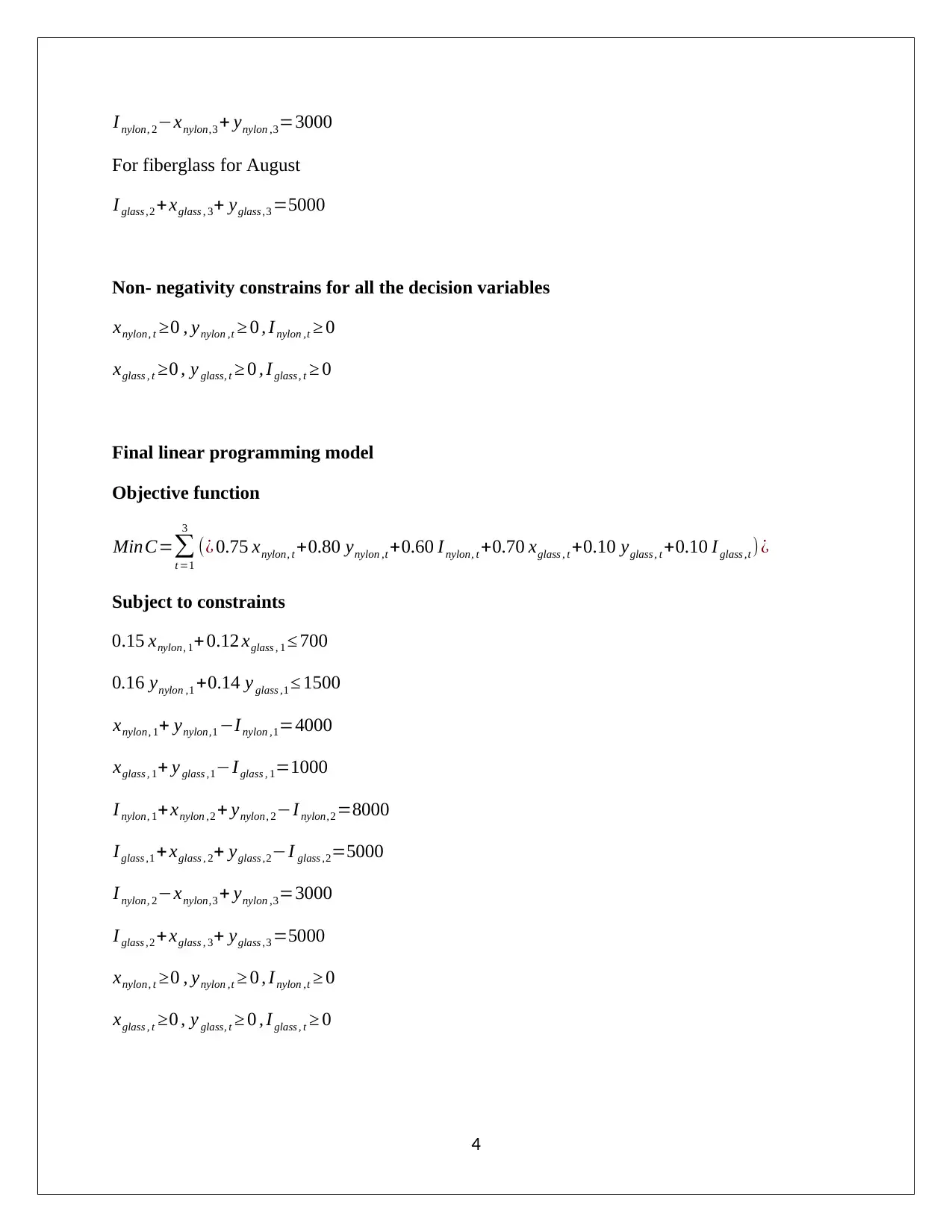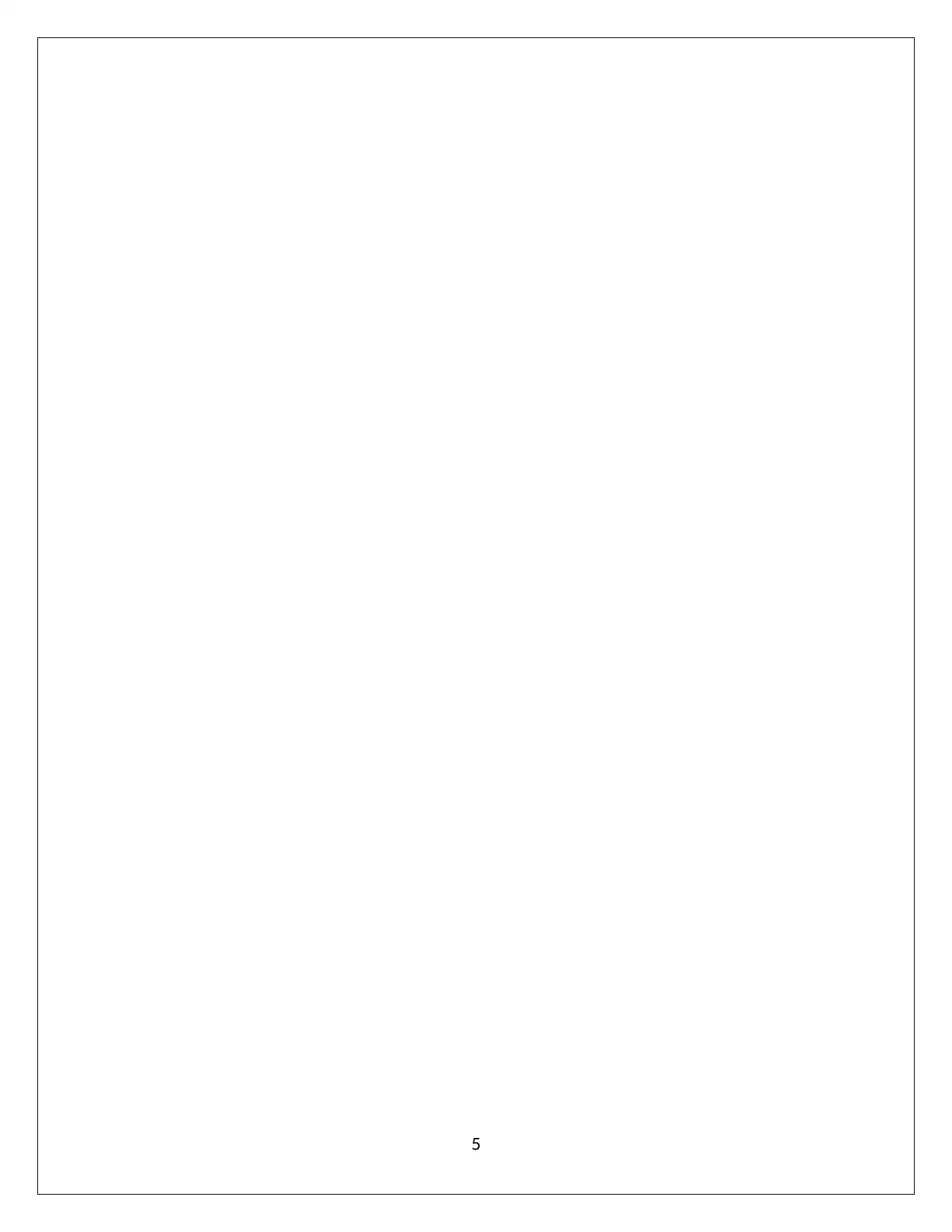Linear Programming Problem: Production Scheduling Analysis Report
VerifiedAdded on 2020/04/13
|6
|574
|32
Project
AI Summary
This project presents a comprehensive solution to a linear programming problem focused on optimizing production schedules and minimizing costs for a tire manufacturing company. The problem involves determining the optimal production quantities of nylon and fiberglass tires over a three-month period, considering production capacity constraints for wheeling and regal machines, demand constraints for each month, and the costs associated with production, materials, and inventory. The solution formulates a linear programming model, including an objective function to minimize total costs and a set of constraints representing production capacities, demand requirements, and non-negativity of decision variables. The model aims to determine the optimal production plan, considering factors such as production costs, inventory holding costs, and demand fulfillment. This analysis provides a structured approach to solving complex business problems using mathematical modeling and optimization techniques, offering valuable insights for production planning and resource allocation.
1 out of 6







![[object Object]](/_next/static/media/star-bottom.7253800d.svg)